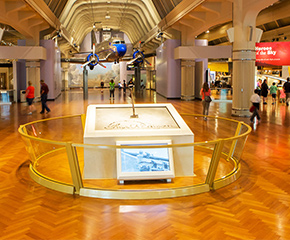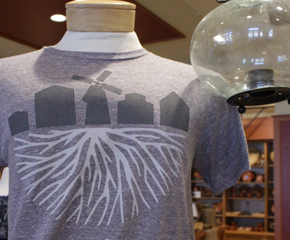"Wire That Fenced The West" Barbed Wire Display Board, Patented 1868 - 1885
Add to SetSummary
Inventors received hundreds of patents for barbed wire during the late 1800s. Some innovators created strands of fencing with sharp metal points cut into the wire; others incorporated small wire spurs twisted and attached to the wire to create a painful barrier. Each inventor believed their variation made the best fencing to keep livestock out of crop fields or confine them to pastures.
Inventors received hundreds of patents for barbed wire during the late 1800s. Some innovators created strands of fencing with sharp metal points cut into the wire; others incorporated small wire spurs twisted and attached to the wire to create a painful barrier. Each inventor believed their variation made the best fencing to keep livestock out of crop fields or confine them to pastures.
Artifact
Display board
Date Made
1868-1885
Creators
Creator Notes
Display made by Ed Mulcrone of Hometown, Illinois. Barbed wires found in display made by numerous makers and patent date ranges from 1868-1885.
Location
Not on exhibit to the public.
Object ID
89.4.17
Material
Wood (Plant material)
Metal
Plastic
Color
Brown
Black (Color)
Gray (Color)
Dimensions
Height: 41.25 in
Width: 29.5 in
Length: 1.375 in
Inscriptions
on face of board: WIRE THAT FENCED THE WEST / STUBBE "PLATE" PAT. 1883 / CRANDAL'S "RIC-RAC" 1879 / MERRIL'S "BUFFALO WIRE" 1876 / UNDERWOOD'S "TACK BARB" 1878 ' / HODGE "SPUR ROWEL" 1887 / VOSHBURGH [sic] "PLATE" 1876 / SUNDERLAND "KINK" 1884 / UPHAM'S "SNAIL BARB" 1883 / BRINKERHOFF "TWISTED RIBBON" 1879 / GUNDERSON "TWO POINT" 1881 / HALLNER "WRAP AROUND" 1878 / SCUTT'S "ARROW PLATE" 1878 / REYNOLDS "NECKTIE" 1878 / WATKIN'S "LAZY PLATE" 1878 / FRYE'S "PARALLEL" 1878 / CURTIS "OFFSET ' 1894 / KELLY'S "DIAMOND POINT" 1868 / BRINKS-MARTELLE "COMBINATION" 1885 / LARSON "WING'S" 1878 / ALLIS "SAW TOOTH" 1881





